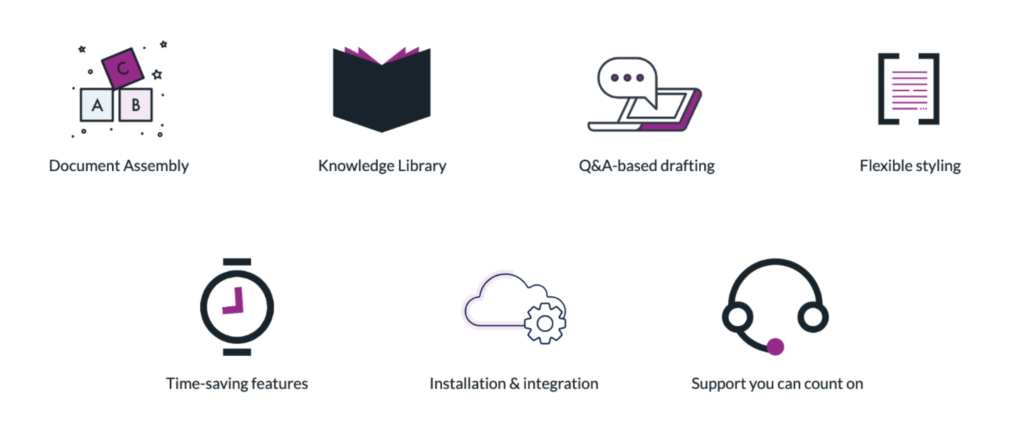
How legal technology is priced and the sales methods used is of growing interest – to this site at least – so it was fascinating to see that contract automation company, ClauseBase, has launched a ‘leasing‘-like model for the solutions it provides to the market, which it has dubbed the Launch model.
Now, leasing is usually associated with things like long-term equipment hire, or property. In this case, ClauseBase came up with the idea of leasing law firms and inhouse legal teams the automated contracts they create for them.
Artificial Lawyer caught up with Senne Mennes, Co-Founder of ClauseBase and who once worked at global firm DLA Piper, to find out some more. Below are Senne’s responses to the questions AL put to him.

How does this resemble leasing? Is it because the clients are paying for the use of the automated template? I.e. you still own it?
The Launch model is similar to leasing because instead of buying the automation outright, the client simply pays for it in increments. However, the client still owns the intellectual property of a document so the analogy is not perfect. At no point does ClauseBase become the owner thereof.
And they only pay each time they use the automated template? How is that calculated?
We draw usage statistics from the platform. Both ClauseBase and the client have access to these usage statistics and can keep an overview of the amount of documents exported.
How does this work? The client sends you a document they want to automate, and which you then do for free? Is that right?
Correct. The client fills out a calculator [note: they have a cost calculator] to get an overview of potential cost savings. They will be able to receive a copy of that report via email [note: see update below]. We also receive a copy of that report and contact the client to get a first look at the documents they’ve chosen. After an initial analysis, we ask any questions that have popped up, finalize the terms of the pricing and start automating the document.
And then what happens?
The client receives access to our SaaS platform. From there, they can fill out a questionnaire to generate a concrete document in Word or PDF.
If they stop paying, they have to stop using it?
Correct. We want our customers to commit to their designated volume but we have a leniency buffer in place in case they export documents less than initially foreseen.
How will you know if they keep using it and stop paying?
The usage statistics I mentioned earlier help us keep a clear overview of that.
What do you expect to be the average cost per document that is automated?
To give the unfortunate lawyerly answer: it depends. We’ve provided for a whole range of documents to be automated under the model. Some may take 20 minutes to fill out under the traditional workflow, some may take 2 hours. Some may be drafted 30 times a year, some may be drafted 300 times a year.
That said, we have found the sweet spot to be a document that is drafted 50 times a year and which takes 2-3 hours to draft under the traditional workflow. For in-house counsel, this amounts to about 77 EUR per document based on an internal cost of 162.5 EUR. For law firms with an hourly rate of 200 EUR, this amounts to 125 EUR per document based on an internal cost of 300 EUR.
Who is this for?
The Launch model is aimed at organisations that want an easy, low-risk introduction to document automation. For this mode, we therefore also use the (ubiquitous) questionnaire-based approach to document automation as so many other document automation startups do because of its ease of use. That is not, however, how ClauseBase differentiates itself.
We have always prioritised being able to handle all sorts of complexity inherent in legal documents and so where ClauseBase really shines is in the dynamic drafting offered by its document assembly mode. In this mode, organisations can create their own intelligent and reusable clauses, store them centrally in their clause library, and deploy them just by pointing and clicking.
This way, lawyers can draft documents by stacking clauses on top of each other like building blocks, all while ClauseBase ensures internal coherence and consistency on terminology, language, styling, cross-references, definitions and even legal nuance. When a lawyer creates a document in this way, they can optionally transform it into a questionnaire, which is where the Q&A mode comes into play. The document assembly mode, however, is only available for organisations taking out an Accelerate pricing plan, which is a more traditional subscription access model. The Launch model therefore factors into a larger strategy to get organisations comfortable enough with basic automation so that they end up wanting to explore more opportunities.
Another prong of that strategy is the community we created for ClauseBase users and legal tech enthusiasts to share their questions, tips and thoughts on our platform, document automation, legal tech and much more.
Finally, we are also making our platform available for free to document automation enthusiasts who want to get acquainted with ClauseBase’s more advanced document assembly mode so that they can experience the opportunities it presents for their organisation. While they lack some of the features available in paid plans, they have unfettered access to our community. We hope that for many of these users, this will be a unique opportunity to connect with like-minded individuals and lead the innovation charge in their organisation.
And finally, what is happening now?
ClauseBase has just released a brand-new version of the website for the Launch subscription model to the public and where we have renamed the document leasing model as the ‘Launch’ model. The name has changed, but the premise still remains the same. The cost calculator for the Launch model and the option to receive a report via email will be added shortly.
ClauseBase now also offers a free version of its software to automation enthusiasts who want to get acquainted with its more advanced document assembly mode and the opportunities it presents for their organisation.
–
Thanks, Senne, good luck with the ClauseBase Launch model!
—
And, here’s a short video that more generally describes what ClauseBase does.
—
P.S. this bit in the company’s FAQ’s about the length of time it takes for them to automate a contract for you was especially interesting. See below:
‘How long will it take to automate a template?
Assuming we are talking about real automation (i.e., not a fill-in-the-blanks template), this can range between less than an hour and more than a week. The more time it costs you to automate the template, the more time you will save when you use the automated template.
The actual amount of time will depend on many factors, such as the length of your template, the amount of interdependencies between paragraphs, the amount of variations you want to cover, the number of exceptions for specific jurisdictions, the number of clauses you can reuse from a previously automated template, the number of languages you want to support, etc.
To give some concrete examples from past projects:
- A single language non-disclosure agreement of 4 pages, that allows you to select a unilateral versus bilateral approach (with changes rippling through several paragraphs), as well as a few secondary options such as applicable law, competent court, duration, etc. can be uploaded and tested in less than an hour.
- A single language employment law deed with 10 different options (dismissal by employee versus employer, notice period or not, varying payments) can be uploaded and tested in less than 4 hours.
- For a triple language, medium-length license agreement (6 – 12 pages, depending on which optional paragraphs are visible) with about 15 different interdependencies and variations, for different types of intellectual property, you probably spend about a day in total to upload this template, test it, and going through some iterations to fine-tune it.
- A single-language complex share purchase agreement (SPA) with 200 different options can be uploaded, tested and fine-tuned in about a week.’